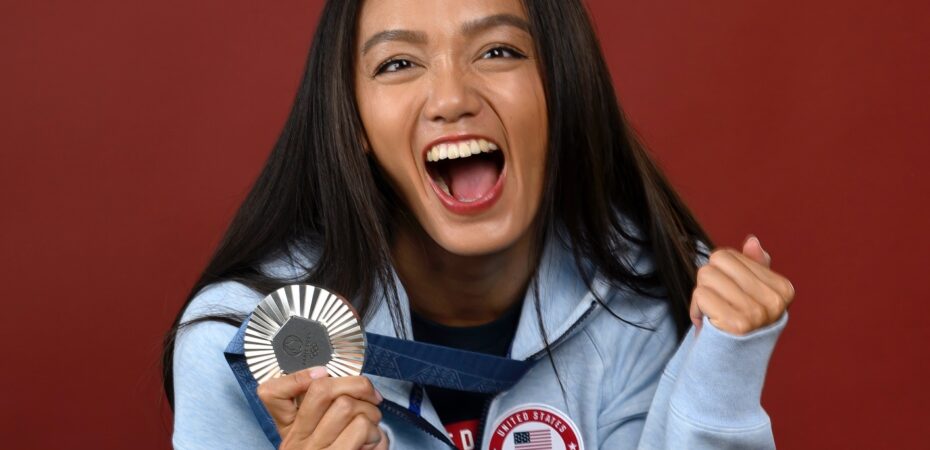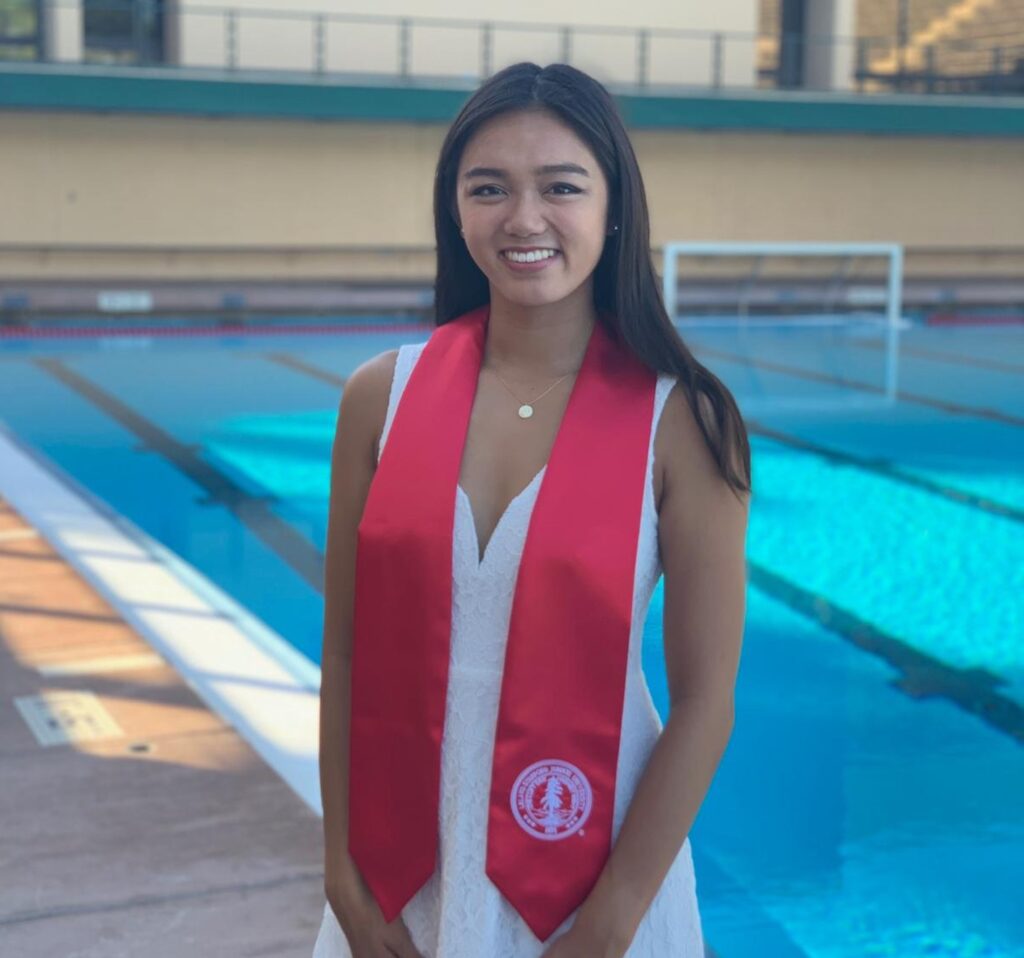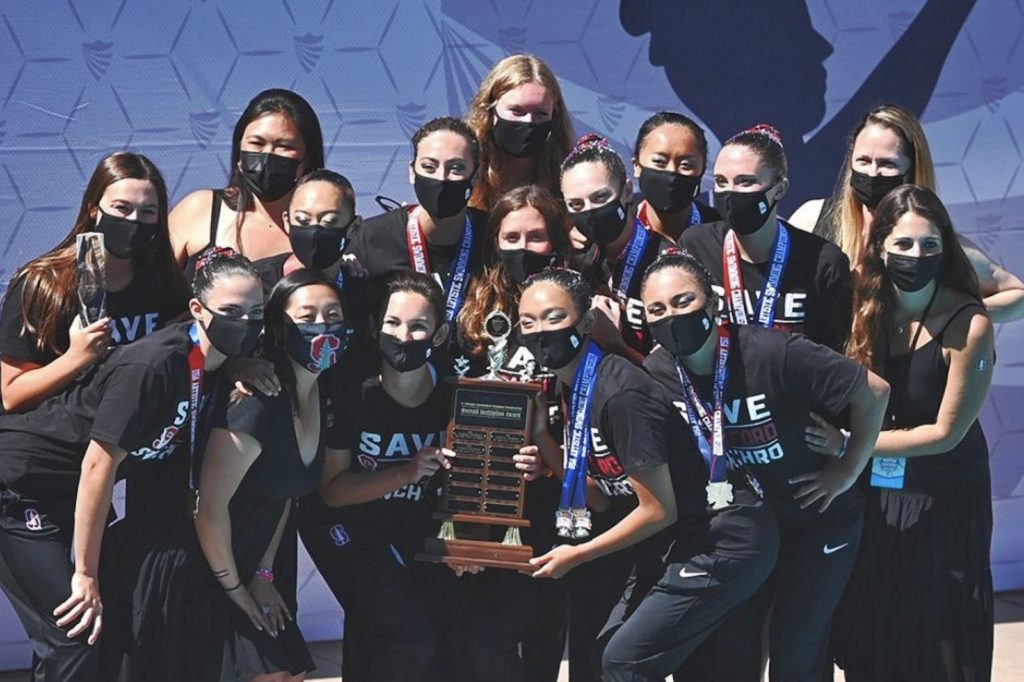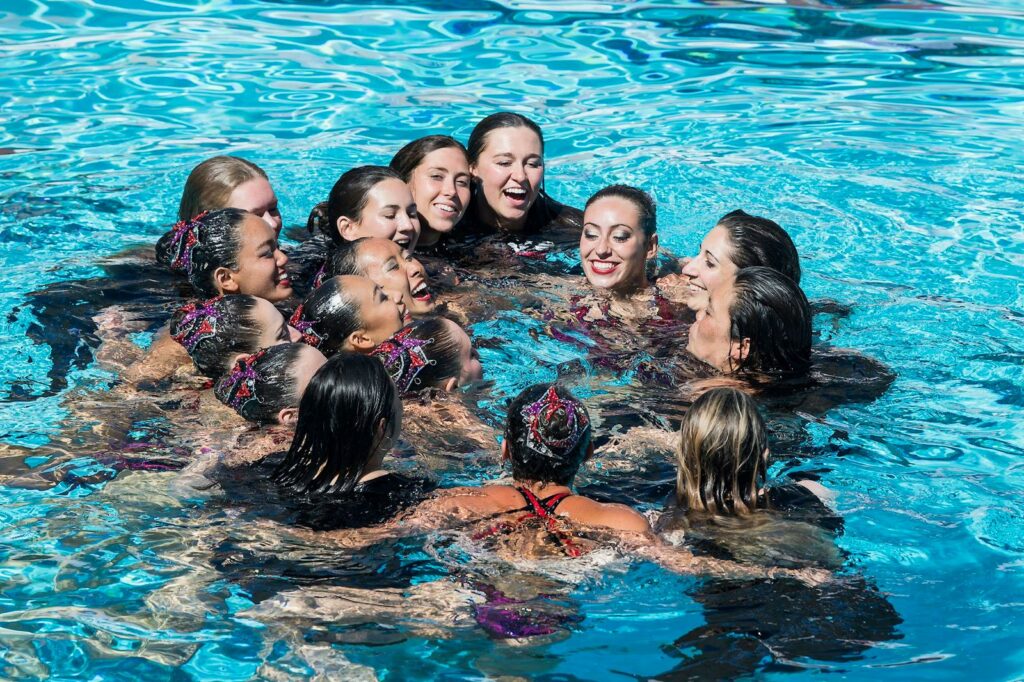In the United States, collegiate artistic swimming provides a unique path for athletes to work towards a university degree while also continuing to swim competitively. The 2025 Collegiate National Championship featured 13 collegiate teams, five varsity and eight club, with several current and former elite-level athletes from the U.S. and abroad among the more than 100 competitors.
Stanford University, The Ohio State University, and the University of the Incarnate Word (UIW) house the nation’s top varsity artistic swimming programs— many former elite-level athletes have gone onto swimming for these colleges after finishing their time on a national team. For others, though, collegiate artistic swimming is or was not the final chapter in their competitive careers.
In this four-part series, hear from Marloes Steenbeek (NED), Jacklyn Luu (USA), Nour Shamala (EGY), and Nikki Dzurko (USA) about their experiences following the collegiate artistic swimming path before coming back to swimming on the international stage.
Jacklyn Luu grew up swimming with Santa Clara Artistic Swimming (formerly the Santa Clara Aquamaids) in California, USA. She competed on the U.S. national team for four years, notably representing the country at the 2016 World Junior Championships and the 2017 World Championships, before enrolling at Stanford University in 2018.
During her collegiate career (2018–2022), Luu was a standout athlete. In 2021, she was crowned Collegiate National Champion in solo, duet, and team, and was later named the U.S. Collegiate Athlete of the Year in 2022.
After graduating from Stanford, Luu rejoined the U.S. national team, ultimately helping the squad win silver at the Paris 2024 Olympic Games. Last month, the 26-year-old again represented her country in three team events at the World Championships in Singapore, placing fourth in free team, sixth in technical team, and ninth in acrobatic team.
Inside Synchro: Did you always know that you wanted to do collegiate synchro?
Jacklyn Luu: I always kind of knew about collegiate synchro because I grew up in the San Francisco Bay Area. Our closest team that did collegiate synchro was Stanford, and of course, Stanford has such a huge reputation outside of just athletics. I knew it was such an amazing school. When I found out that they also had this amazing synchro team, I knew I would have loved to be there when I was older. So I always knew about it, but I didn’t really seriously consider doing or pursuing it until I was in high school.
IS: Did Stanford recruit you or were you the one to make the first move?
JL: Growing up on the different age group national teams, I tried my best to get my name out there and reach out to the coaches at the time. From there, we were able to kind of form a relationship and that helped with them being able to recruit me later. When I was a youth swimmer, the Stanford coaches had me visit and actually pre-swim a trio for one of their collegiate meets!
IS: You already went into it a little bit, but what made Stanford the right decision for you ?
JL: I felt like there were a lot of different reasons why I ended up committing to Stanford. I think first off, as an academic institution, Stanford is one of the best in the country and in the world. So that was a no-brainer. And then in terms of its collegiate synchronized swimming team, I knew that I wanted to still be really competitive athletically. And being able to be coached by the Stanford coaching staff and having access to their amazing world-class facilities was all super appealing for me.
IS: How did your first year go?
JL: My first year at Stanford was an adjustment of trying to find the right balance of all these different things that I was juggling, like the 20 hours of training with a full academic course load. And then on top of that, trying to figure out who I am outside of just being a student and an athlete — my social life and how I can spend time outside of just school and the pool.
IS: Did you always know you wanted to come back to elite?
JL: I entered college pretty sure that I was done with elite synchro. And I was okay with that. I was excited to move on, and like I said, figure out who I was outside of just being a synchronized swimmer. It wasn’t until the Tokyo [2020] qualifying event, where I saw how the U.S. team was just so darn close to qualifying, that I realized that I wanted to go back and try to qualify the U.S. for the Olympics again.
I had already thought of my life plan, applying to medical school and becoming a doctor. So it was scary putting that on hold to go for this dream that I had already kind of given up, but it was definitely a risk that I wanted to pursue. I think collegiate synchro gave me the mental maturity to be able to think about those kinds of decisions, which I’m extremely grateful for.
IS: Would you say then that collegiate synchro has also helped you find motivation or passion again?
JL: Oh, absolutely. Going from when you’re growing up, especially in the U.S. on a club team, it’s very much about figuring out what works well for you and trying to just do your best as an individual athlete.
Collegiate synchro is a completely different environment, because your value to the team is just your presence in being a part of the team. It’s not about how well you do at this meet or this competition, and your worth isn’t based on your results or performance. Being able to be in that environment is so amazing, and that helped me refine my love for the sport.
IS: What’s the main difference, in your experience, between collegiate synchro and elite synchro?
JL: With collegiate synchro, you have this maximum amount of hours per week that you can train, and that’s 20 hours a week. Because of that, we are forced to be extremely efficient with our time. You have to get things done, and in a way, being done is better than being perfect.
On the flip side with elite synchro, we’re really, really striving to be pushing the boundaries of this new difficulty system, and how well can we execute within the boundaries of this new kind of synchro that we have. Because of that, our hours are going to be 30+, more than in college. And it’s for different reasons: in collegiate synchro, you have to balance the academics, plus the athletics, plus everything else going on in your life. Versus in elite synchro, our main job is to perform these routines at a high level.
IS: What’s the most important takeaway from your collegiate experience that you’ve carried back into the elite world?
JL: When I was a collegiate athlete and I was juggling the practice hours along with a full pre-medical academic course load— on top of all my other volunteering and extracurriculars and research opportunities that I was pursuing— I was almost a machine with how disciplined my time management was. I think that really carried over into my life as an elite athlete on the national team.
I feel like I’ve become really disciplined with how I spend my time and how I’m able to take care of all the other aspects of my life outside of the hours that we train at the pool. On top of that, I really learned what it meant to be a part of the team, but also lead within a team, and be able to navigate very stressful moments in a group of very differing personalities.
IS: After graduation, how was the transition back to elite?
JL: It was definitely rough going back from college to elite, the training hours were drastically different. I think the attention to all of the minutiae and details in a routine significantly increased, and the first few months I was really trying hard to build up my physical fitness and endurance, and that was very difficult for me.
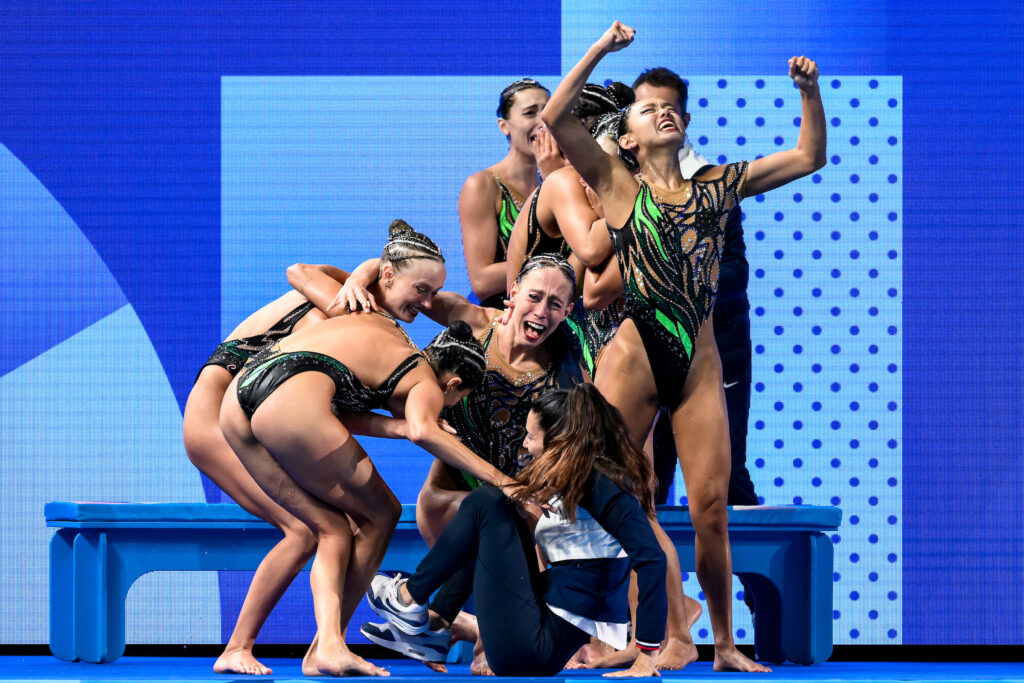
IS: What are some of your goals going forward?
JL: I’m actually taking a break from elite because I’m going to medical school. I’m starting in a few weeks, which I’m super excited for. I’m unsure of where my future lies with elite synchro, but I know that the team is super excited, especially heading into the LA 2028 Olympic Games.
Our team has an amazing mix of very experienced veterans, but also extremely talented and hardworking members from the junior [national] team from last year. With that, we’ve been able to find such an incredible balance of that experience, but also this energy and excitement from our young teammates. Since we’re hosting [LA 2028], I know that we’re going to be extremely prepared, bring a new sense of energy and excitement to the sport, and showcase it to our country and the world.
IS: Is there anything else you’d like to add?
JL: What I have loved most about artistic swimming has always been the people. Throughout my 16-year career, I have laughed with, learned from, and grown with so many amazing, strong, smart, and creative people from around the country and the world.
In collegiate synchro, you get this same amazing community, but in a different way compared to a club or the national team. In a club team, you’re focused on individual growth, while on the national team, the goal is to compete and perform at the highest level of the sport.
At college, the goal is to learn about the world and figure out how you want to contribute to it. Your value as part of a collegiate synchro team comes from simply being present and showing up as you are. You get to enjoy the sport you grew up loving while exploring other parts of your identity outside of the pool.
For me, I was always interested in human health and technology, so I majored in psychology and got a Master’s in Biomedical Informatics. I volunteered with the elderly, worked with education non-profits, and did biomedical research at Stanford. Swimming collegiately also gave me time to decide if I wanted to go back to the national team to pursue the 2024 Olympics or go to medical school to become a doctor. In my case, I’m doing both.
In the end, everyone has a different path and different goals. Artistic swimming is a small sport, with not many opportunities aside from club or national team. Collegiate synchro is an amazing way to do the sport we love, build lifelong friendships, and discover who you are outside of sport. No matter your background, there’s a place for you.
I’m forever grateful for my time at Stanford, and for anyone interested in collegiate synchro, please don’t hesitate to reach out to me on Instagram, or to USA Artistic Swimming for questions.
Responses have been edited for length and clarity.
ARTICLE BY MARI FLORES
Cover photo: USA Artistic Swimming
If you’ve enjoyed our coverage, please consider donating to Inside Synchro! Any amount helps us run the site and travel costs to cover meets during the season.

